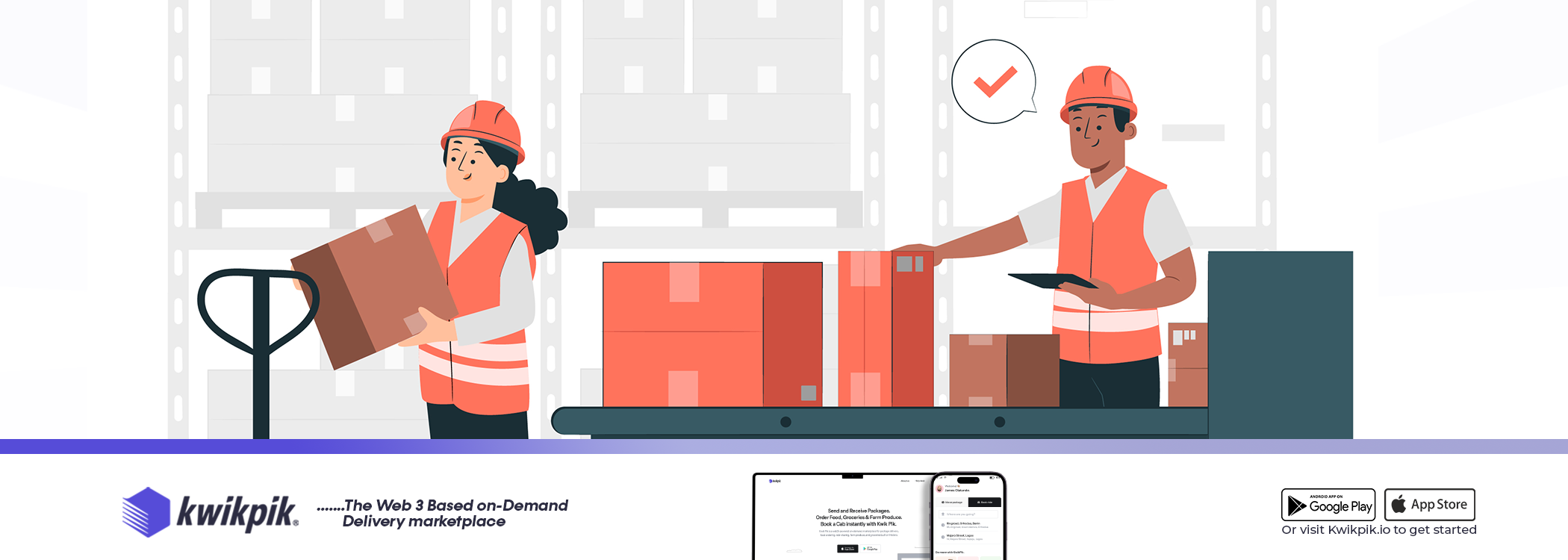Warehousing as a Service
 Onyeka Ekwemozor
Onyeka Ekwemozor
The rise of on-demand services has changed consumer expectations. They now seek fast, easy, and convenient deliveries.
To keep up, businesses are using strategies like online stores, in-app or website-integrated delivery services, and real-time tracking.
However, delivering goods between cities can lead to increased customer wait times which can hurt sales, cost higher, and even deter potential customers from making purchases.
This is where Warehousing as a Service (WaaS) comes in.
No matter the stage of growth your business is in, managing inventory and storage remains a top concern. Even with an online store, inventory still needs to be stored in an organized manner, so it is easy to pick and track inventory levels.
What is Warehousing as a Service?
Warehousing as a Service involves businesses stocking their inventory in warehouses located nearest to the cities they deliver to, facilitating easy deliveries and enhancing convenience.
It offers businesses flexible, affordable, and scalable inventory storage solutions.
For instance, a business based in Onitsha with regular customers in Abuja can store its most ordered products in a warehouse located in Abuja. Whenever there's an order, customers can either walk in to pick up their items or opt for delivery, which will be promptly executed to the customer's location.
According to several online statistics, delays in delivery can significantly impact consumer buying behavior in varied manner such as:
69% of consumers are less likely to shop with a business again if an item is not delivered within the promised date
17% of consumers will stop shopping with a business after one late delivery
55% of consumers will stop shopping with a business after two to three late deliveries
70% of consumers have experienced a shipping delay in the last six months
58% of consumers who have experienced a delivery delay have left a negative online review or told someone else about the issue
40% of consumers who have experienced a delivery delay are less likely to buy from the seller both online and in-store
53% of customers have canceled or abandoned a purchase due to slow delivery
Why You Should Consider Warehousing as a Service
1. Combat Transportation Costs
In Nigeria today, the price of goods and services are largely affected by the fuel scarcity and naira devaluation, causing transportation costs to skyrocket.
Managing multiple deliveries across cities can be expensive. WaaS allows businesses to send inventory to warehouses once, reducing transportation costs and logistics complexity.
2. Faster Delivery Time
Timely deliveries are crucial for customer satisfaction. According to statistics, delays in delivery can lead to reduced customer loyalty and negative reviews. By using WaaS, businesses can ensure prompt deliveries, leading to happier customers and repeat business.
3. Enhanced Safety
Managing multiple packages with different drivers can result in delivery mistakes and losses. WaaS minimizes these risks by centralizing logistics operations.
4. Customer Satisfaction
The businesses that last are the ones who can keep their customers happy. Customers are free marketers of your business. When they are happy, they sell your brand to others. When they are displeased, they turn others away from your brand. Warehousing as a Service is one way to keep customers and their reviews about you happy.
5. Expertise in Logistics
Logistics processes can be challenging for businesses. WaaS providers have the expertise and infrastructure to manage logistics efficiently, allowing businesses to focus on core activities.
6. Flexibility and Scalability
As your business grows, logistics will become more complex and require expansion. With WaaS, you can easily expand your business and scale faster. Making sure you have enough space for not only current needs but also future growth will help prevent you from outgrowing the warehouse immediately.
So WaaS allows you to expand your operations without investing in additional warehouse space.
7. No Warehouse Investment Needed
Investing in your own warehouse requires a tremendous amount of capital and startups can rarely afford to invest in this when they’re still growing. Partnering with a 3PL, like Kwikpik, that offers WaaS is a cost-effective way for your business to store their inventory and outsource time-consuming fulfillment tasks.
8. Focus on What Matters
With a WaaS provider, you can spend more time on money-making tasks and functions while delegating warehousing, inventory management, and order fulfillment to the experts.
How to Use Warehousing as a Service
To use WaaS, identify a reliable delivery partner who has the capacity to accommodate your business orders as you grow.
You also want a partner who is meticulous and keeps track of inventory, letting you know what is left, sold out, or requires replacement.
Lastly, you want a partner with offices in your city of choice and with the ability to expand to new cities. Covering your city of choice means that your business will deliver faster. Expanding to new cities, means you have the opportunity to deliver to more cities as the 3pl grows.
Kwikpik: Your Partner For Success
As a last-mile nationwide delivery and 3PL platform with offices across major cities in Nigeria: Abuja, Benin, and Lagos, Kwikpik is your reliable partner for warehousing needs.
We offer this service to Switchub, one of our business partners, and when asked how this service has been, this is the review from Benedict Okoye, CEO of Switchub:
Everything has been smooth. It's been really nice.
Your business can enjoy this service, all you have to do is send a direct message through our social platforms or speak with our support: support@kwikpik.io
Download our app| Become a rider| Become a business partner| Visit our social channels
Subscribe to my newsletter
Read articles from Onyeka Ekwemozor directly inside your inbox. Subscribe to the newsletter, and don't miss out.
Written by

Onyeka Ekwemozor
Onyeka Ekwemozor
Onyeka is a multiple Google-ranked content writer.